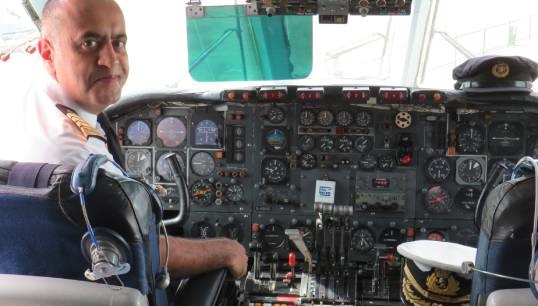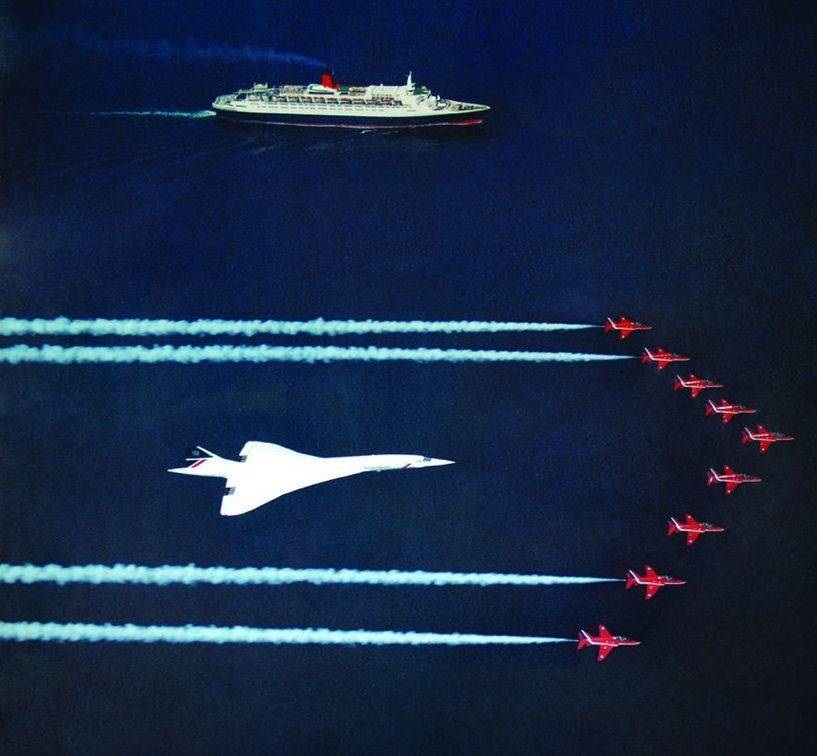- Topics
- Campaigning
- Careers
- Colleges
- Community
- Education and training
- Environment
- Equality
- Federation
- General secretary message
- Government
- Health and safety
- History
- Industrial
- International
- Law
- Members at work
- Nautilus news
- Nautilus partnerships
- Netherlands
- Open days
- Opinion
- Organising
- Switzerland
- Technology
- Ukraine
- United Kingdom
- Welfare

Nautilus member Captain Aseem Hashmi, a former civil aviation professional and current master of Cunard's RMS Queen Mary 2, reminisces about Cunard Line's foray into the aviation business 60 years ago with the formation of Cunard Eagle Airways
Did you know that, for several years in the 1960s, the Cunard Line jointly operated two airline companies in addition to its passenger liner business?
The Imperial War Museum in Duxford, Cambridgeshire, marked the 60th anniversary of the end of Cunard Eagle Airways with an exhibition in August 2023. Back in August 1963, the airline – a joint venture between the Cunard Line and Eagle Airways – officially ceased operations. A newly formed 'alternative' venture, BOAC-Cunard, continued to operate for a further three years until 1966.
Cunard's experiment with the civil aviation industry can be traced back to 1937 when the company's then-chairman Sir Percy Bates sensed the emerging threat from expanding air travel. He initially floated the idea of a tie-up with Imperial Airways, which at the time operated a fleet of famous 'Flying Boats', but the idea of a joint venture did not pick up pace again until after the Second World War.
Bates was succeeded as Cunard's chairman by Sir John Brocklebank in 1946 who continued the company's vision to set up a unique in-house airline to complement its shipping trade across the Atlantic. At the time it made business sense to team up with an existing air carrier rather than start out on one's own. So in March 1960, Cunard agreed to buy a 60% share of the successful private airline Eagle Airways for £30 million and Cunard Eagle Airways was finally airborne.
In October of that year the company pioneered what we know today as 'fly-cruising' to complement its winter Caribbean cruise schedule. In 1961 the company was granted the licence to operate daily flights between London Heathrow and New York. At its height the airline operated a fleet of six Douglas DC-6s, variations of the Bristol Britannia; two Boeing 707s, and a sole De Havilland DH 114 with flights from London to Bermuda, the Bahamas, Miami, New York, San Francisco, Montreal and other destinations.
Arch-rival BOAC – sensing it was losing lucrative business –offered Cunard a 30% stake to join its existing aviation business. A new airline was formed in June 1962 called BOAC-Cunard, but by summer 1963 there were significant differences of opinion at boardroom level as to the future direction of this ever-expanding airline, and Eagle Airways eventually pulled out of the joint venture on 9 August 1963. This left BOAC-Cunard to continue the joint air-sea romance alone.

Concorde flying in formation with the Red Arrows over the QE2 in the English Channel, on 18 May 1985. This unique image was heralded at the time as the 'photograph of the century'
By 1964, BOAC-Cunard was quite a successful and profitable airline. However, the competing priorities of the air division – which desperately required more investment to expand the air fleet with modern aircraft – and the shipping division, which needed urgent finance to prop up its dwindling trans-Atlantic liner service, came to a head in 1966. Cunard's new chairman Sir Basil Smallpeice (former managing director of BOAC) made the difficult decision to end the venture in September 1966, to enable him to concentrate on resurrecting Cunard's shipping business.
Smallpeice made the controversial – but with the benefit of hindsight, revolutionary – decision to impose last minute changes to the design of the QE2, which made it more of a cruise ship rather than solely a liner. This was vital for the company to survive and thrive, especially with the airlines taking an ever-greater slice of the trans-Atlantic passenger trade.
Cunard Line's 'fling' with civil aviation did not end with Cunard Eagle Airways and BOAC-Cunard. In 1977, Cunard and British Airways (BOAC's successor airline) formed a supersonic partnership with the very successful QE2-Concorde programme. In fact, by 1985 Cunard provided 75% of Concorde's charter business. This unique partnership of two British icons came to an end in October 2003 when it was announced that Concorde would be retired from service.

My own budding flying career was abruptly curtailed with sweeping cutbacks in the civil aviation industry in the early 1990s, after which I changed direction and joined the Cunard Line as an officer cadet.
Do I think the Cunard Line will ever toy with civil aviation again? 'Never say never'! Doors to automatic and cross-check, chocks away!
Tags
